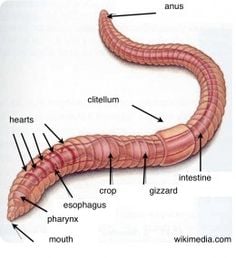Red Wiggler Worms Demystified: Opening the Secrets of Vermiculture for Greener Living and Nutrient-Rich Dirt
In the world of lasting practices for enriching soil quality and advertising eco-conscious living, red wiggler worms play a critical yet commonly ignored function. Red Wiggler Worms. Understanding the details of caring for these worms, enhancing their atmosphere, and utilizing their castings can lead to a greener way of life and much healthier dirt for plants to grow.
The Duty of Red Wiggler Worms
Red Wiggler worms play an essential duty in composting systems by efficiently damaging down raw material right into nutrient-rich castings. These ravenous eaters eat a variety of organic materials, such as kitchen area scraps, backyard waste, and paper products. As they feed, the worms' digestive procedures break down the natural issue into a penalty, dark, and nutrient-dense material known as worm castings or vermicompost.
The spreadings created by Red Wiggler worms are highly valuable for dirt health and wellness and plant development. They are rich in vital nutrients like potassium, phosphorus, and nitrogen, which are crucial for supporting healthy and balanced plant development. Additionally, worm spreadings include useful microbes and enzymes that help boost dirt structure, rise water retention, and boost nutrient uptake by plants.
Benefits of Vermicomposting

It improves dirt framework, improves dirt oygenation, and enhances soil dampness retention. Vermicompost likewise enriches the soil with important nutrients like nitrogen, phosphorus, and potassium, advertising plant development and general dirt fertility.
Additionally, vermicomposting supports lasting horticulture practices by supplying a natural and chemical-free option to artificial plant foods. Red Wiggler Worms. This eco-friendly approach not only improves the soil however additionally helps reduce reliance on damaging chemicals, advertising a greener and extra sustainable way of horticulture
Establishing a Worm Bin
When establishing a worm container for vermicomposting, correct setup is important to ensure the success of the composting procedure. The initial step in setting up a worm container is selecting an ideal container. This can be a plastic bin or wood box that gives adequate area for the worms to move and has correct drainage holes to stop waterlogging. Next, a bed linen product such as shredded paper, cardboard, or coconut coir must be included in the bin. This bedding provides a comfy atmosphere for the worms and helps keep dampness degrees.
After adding the bed linens, present the red wiggler worms to the container. It is suggested to begin with a small number of worms and progressively raise as they multiply. The worms need to then be provided with food scraps such as vegetables and fruit peels, coffee premises, and eggshells. It is vital to avoid adding meat, dairy, oily, or salted foods to protect against bring in bugs and producing unpleasant odors.
Consistently monitor the moisture degrees and temperature in the worm container to guarantee optimum conditions for the worms. With proper configuration and upkeep, the worm container will successfully convert organic waste right into nutrient-rich compost for your plants and garden.
Harvesting Worm Spreadings
To successfully accumulate nutrient-rich worm spreadings from your vermicomposting system, a methodical harvesting approach is vital. When it comes time to harvest the worm castings, there are a couple of crucial steps to comply with to make sure an effective process.

Troubleshooting Common Issues
Determining and resolving usual difficulties that might develop throughout the vermicomposting procedure is essential for maintaining a efficient and healthy and balanced worm container. Including excess food scraps can lead to a build-up of dampness and level of acidity in the worm container, possibly damaging the worms. An additional concern is undesirable smells originating from the worm bin.
In addition, if the worm populace is decreasing or the worms appear undesirable, it can be as a result of ecological stress factors such as severe temperatures or pH levels. Keeping an eye on these variables and making essential modifications is essential for the well-being of the worms. By repairing these common issues promptly, vermicomposters can make certain a successful and smooth vermicomposting process while keeping a flourishing worm population.

Verdict
To conclude, red wiggler worms play a critical function in vermiculture by damaging down raw material into nutrient-rich soil. The advantages of vermiculture consist of greener living and boosted dirt quality. Establishing a worm bin is essential for effective vermiculture, published here and collecting worm castings offers useful compost for horticulture. By understanding and repairing typical concerns, individuals can open the keys of vermiculture for click lasting living and much healthier dirt.
As they feed, the worms' digestive processes damage down the natural matter into a penalty, dark, and nutrient-dense product known as worm castings or vermicompost.
The spreadings generated by Red Wiggler worms are extremely valuable for dirt health and wellness and plant development. Including excess food scraps can lead to an accumulation of wetness and acidity in the worm bin, possibly hurting the worms.Additionally, if the worm populace is declining or the worms show up harmful, it might be due to ecological stressors such as severe temperature levels or pH levels. Establishing up a worm bin is vital for successful vermiculture, and collecting worm spreadings offers valuable garden compost for gardening.